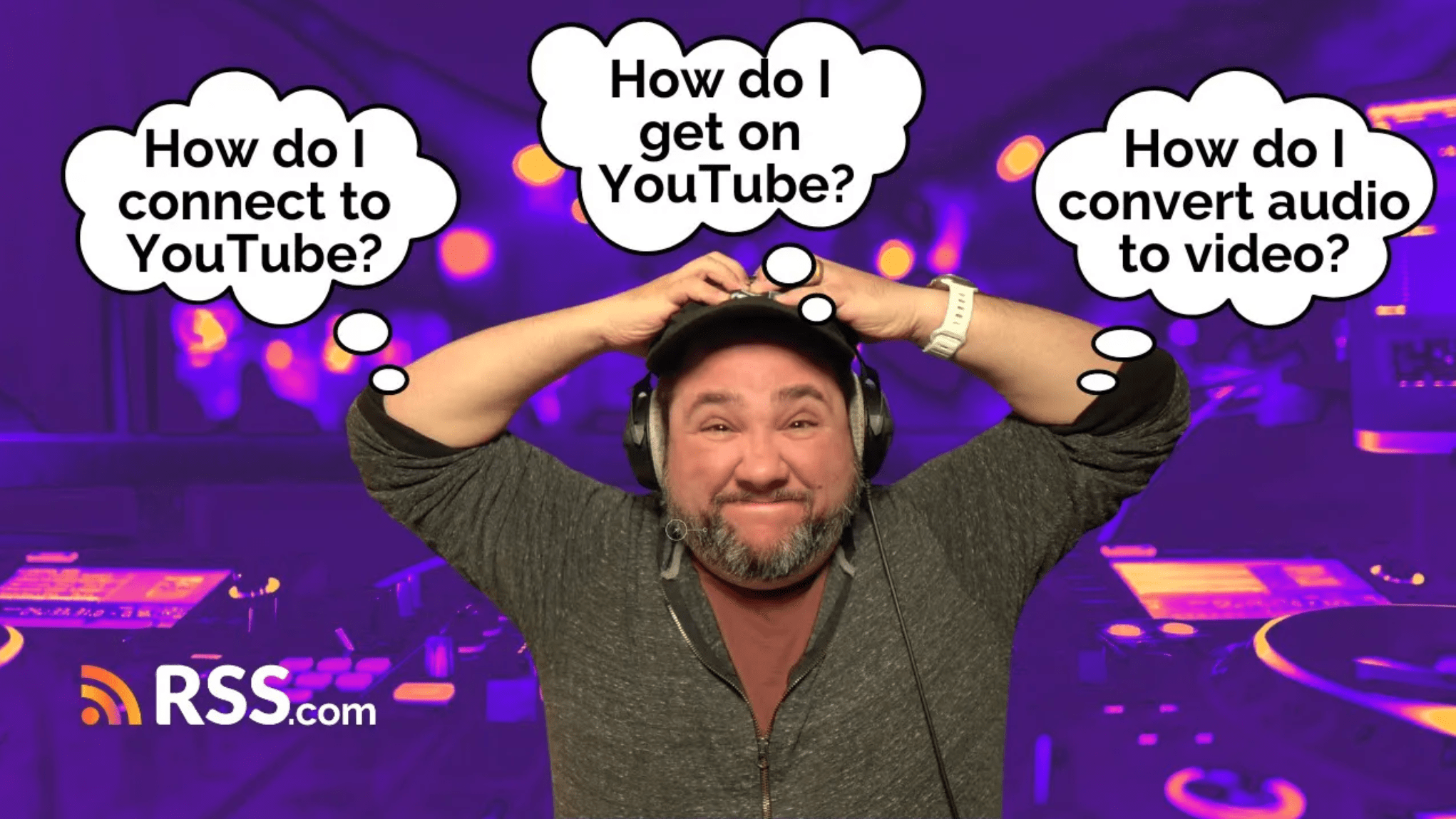We recently joined the YouTube Podcasts team for an exclusive webinar where we discussed everything from how to publish your podcast on YouTube to converting your audio-focused episodes into engaging videos directly in your RSS.com Dashboard.
There were a lot of questions during our Q&A, and we’ve decided to put together a blog post (and video) that answers all of them, including:
- How to get your podcast episodes on YouTube
- Do my YouTube analytics show up in my RSS.com dashboard?
- Can you post on YouTube and other podcast streaming platforms like Spotify and Apple Podcasts simultaneously?
- Do listeners need a YouTube Premium subscription to avoid episodes stopping when they leave the app?
- Should I make separate videos for my podcast instead of using YouTube’s or RSS.com’s auto-publishing features?
- How should I organize my podcast and playlists on YouTube?
- What are the best practices for getting my podcast found in YouTube search?
- What are the do’s and don’ts of ads on YouTube?
How Do I Get the Podcast Episodes I’ve Uploaded to RSS.com on YouTube?
RSS.com’s integration with YouTube makes publishing your episodes directly on YouTube a breeze.
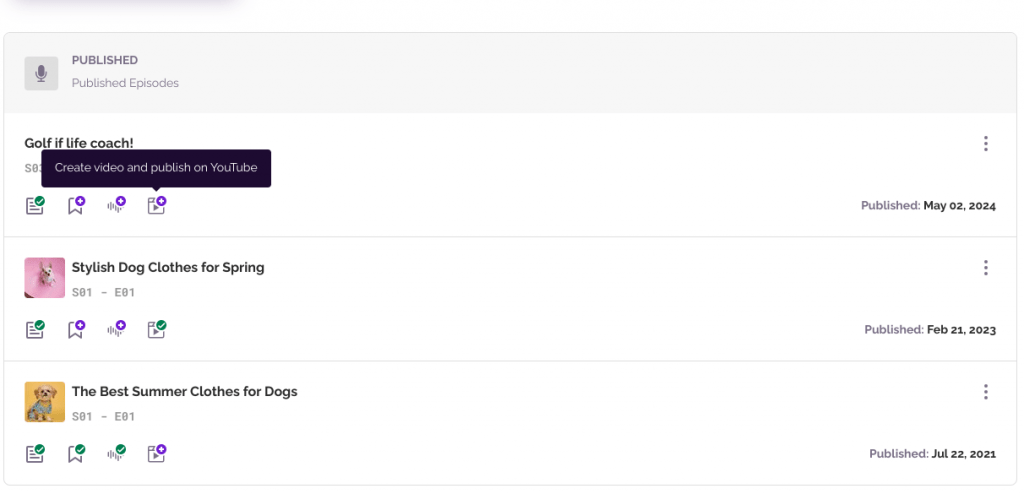
To get started, log in to your RSS.com Dashboard and click the video icon with the plus sign on the episode you’d like to convert into a video.
The feature will begin the process of converting your audio-only episode into a YouTube video.
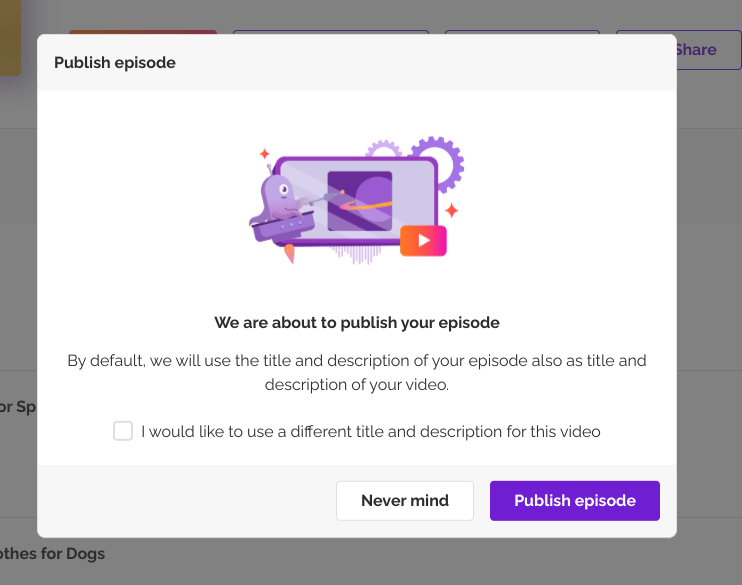
In your RSS.com dashboard, click the plus sign to create and publish the video on YouTube. Configure your distribution channel by signing in with your Google account and setting up a playlist for your podcast. Once configured, your podcast will appear in the playlist on your YouTube channel.
Need help setting up a YouTube channel? Click here to visit our step-by-step guide.
Do YouTube Analytics Show Up in the RSS.com Dashboard?
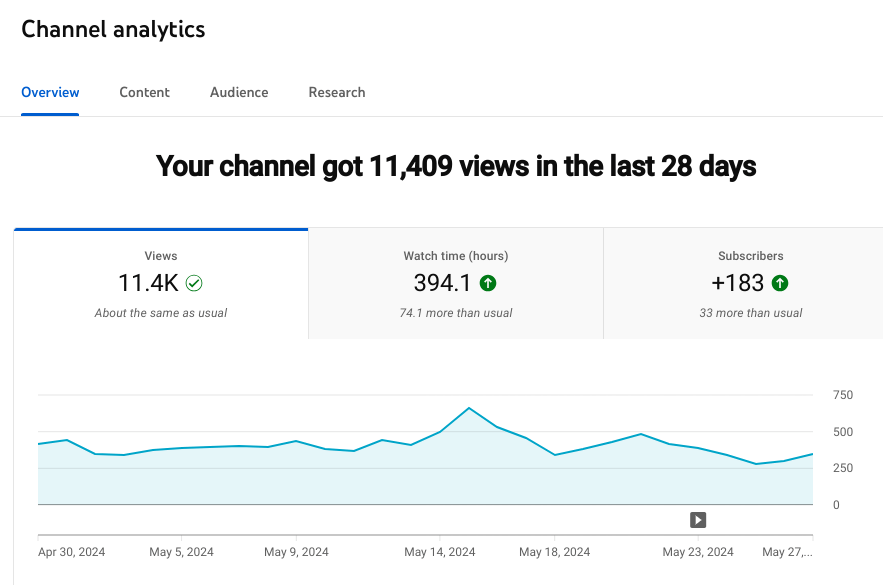
Your YouTube analytics do not show up in your RSS.com dashboard. The reason is when you send a podcast episode to YouTube, YouTube creates a copy of the audio and turns it into a video. Therefore, you will need to check YouTube for specific analytics related to your videos, such as views, completion time, and subscriber information.
RSS.com does provide detailed local analytics for other platforms, but for YouTube, you’ll need to reference your YouTube channel’s analytics.
Can You Post on YouTube and Other Podcast Platforms Simultaneously?
Yes! RSS.com has both automatic and guided distribution to the top podcast directories and once you’ve set up your account for auto distribution, all your podcast episodes will be automatically sent to the top podcast listening apps like Spotify, Apple Podcasts and Amazon Music.
To have your episodes automatically get published on YouTube, you can connect your podcast’s RSS feed to YouTube, allowing YouTube to automatically upload your existing and new episodes from your feed.
This way, new episodes will be published to Apple Podcasts, Spotify, and other directories, as well as YouTube, without any additional manual effort on your part.
Do Listeners Need a YouTube Premium Subscription to Avoid Episode Stopping?
Listeners do not need a YouTube Premium subscription if they use the YouTube Music app, which allows continuous playback even when the phone is locked or while using other apps.
However, in the standard YouTube app, a YouTube Premium subscription is required to avoid episode interruptions when switching apps or locking the phone.
Should I Make Separate Videos for My Podcast Instead of Using Auto Publishing?
Deciding whether to make separate videos for your podcast depends on the level of effort and interactivity you want to achieve.
If your videos are simple and static, auto-publishing features like the one offered by RSS.com and YouTube may suffice.
However, if your content involves dynamic visuals, guest interactions, or roundtable discussions, creating separate videos might be more engaging. This approach will require more effort, including editing and syncing audio and video.
Ask yourself what format you feel is more engaging and would be more engaging for your listeners.
How Should I Organize My Podcast on YouTube?
You can easily organize your podcast on YouTube by creating dedicated playlists. For example, you could have a dedicated playlist for different seasons, trailers, or short teasers etc.
If your podcast content is related to your main YouTube channel, create the playlists there; otherwise, consider creating a separate YouTube channel for your show.
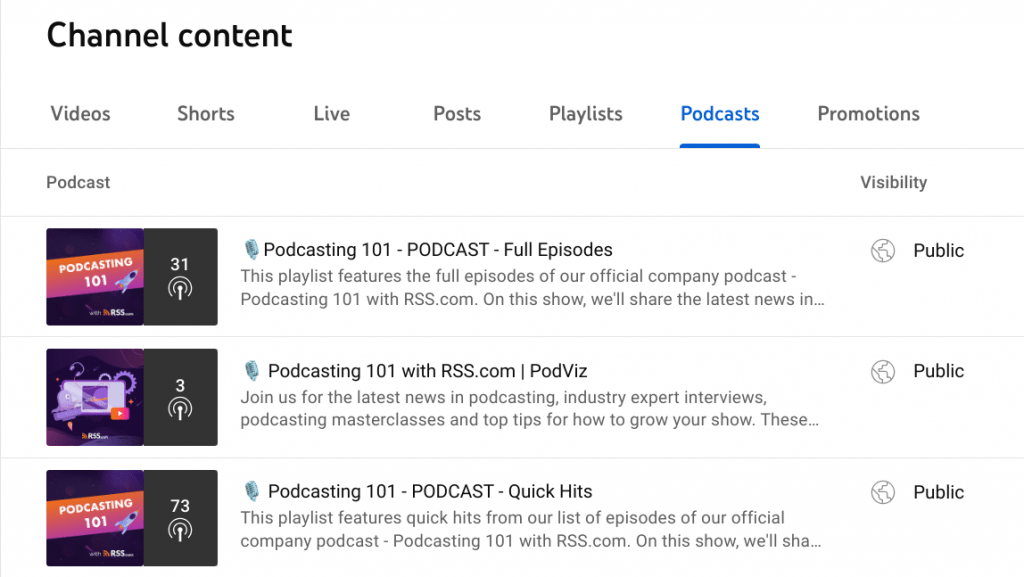
What Are Best Practices for Being Found in YouTube Search?
To help YouTube and viewers understand what your videos are about, following best practices can help your videos appear for people searching for related content. To be found in YouTube search, follow these optimization best practices:
- Match your podcast episode titles and descriptions with those in your RSS feed.
- Create compelling titles that spark curiosity and answer questions.
- Use visually appealing thumbnails and follow YouTube’s best practices for thumbnails to catch viewers’ attention.
- Ensure your content delivers on the promise of the title and thumbnail to keep viewers engaged.
We’ve created a full tutorial on performing on how to grow your podcast on YouTube! In the below video, we cover:
- Navigating the basics of setting up and optimizing your Podcast YouTube Channel.
- Crafting a growth strategy for your show to get you more visibility and reach.
- Understanding YouTube’s SEO and how to rank higher in search results.
- Understanding YouTube’s algorithm and leveraging it to get your podcast suggested to more viewers.
What Are the Do’s and Don’ts of Ads on YouTube?
For ads on YouTube, host-read ads within the episode are acceptable. However, non-host-read dynamically inserted ads are not allowed. Once an episode is uploaded to YouTube, it cannot be changed, and dynamically inserted ads will not update the video on YouTube.
To comply with YouTube policies, stick to host-read ads recorded as part of the episode.
I hope these answers help you navigate the integration of your podcast with YouTube. If you have any more questions, feel free to reach out.
Happy podcasting!

